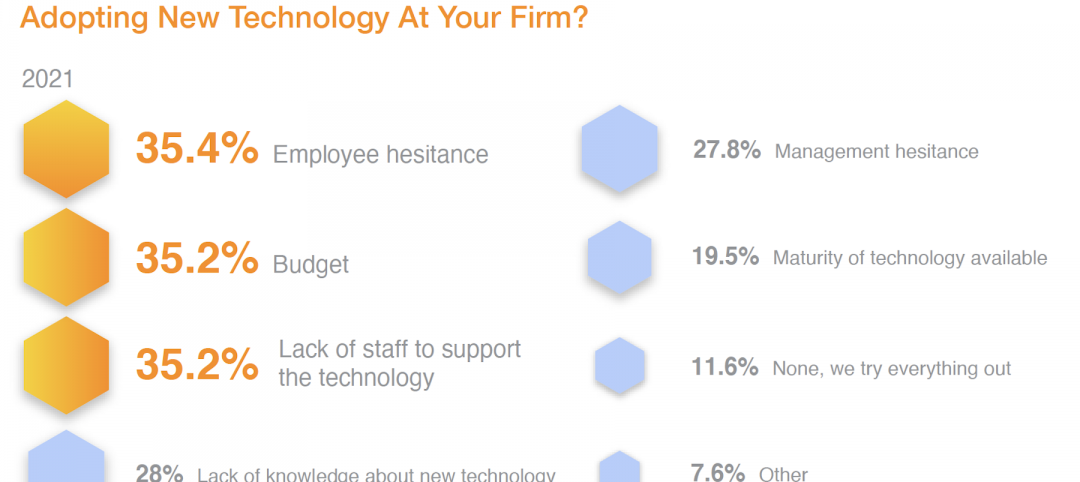By 2020 there will be as many as 50 billion active Internet-connected devices worldwide. Every device throws off “digital exhaust” that provides clues about the user’s preferences and whereabouts, to say nothing of the massive amounts of information mobile devices transmit via social media.
“These are the kinds of data we should be measuring when planning cities,” said David Fano, Partner and Managing Director at Case, the New York–based building information modeling consultancy, during the firm’s first-ever bldgs = data conference, held May 28 at The Standard, along New York City’s High Line. (Editor's Note: Case was acquired by WeWork in August.)
In his opening remarks, Fano advocated for advancing ways to aggregate personal behavior data from inside buildings to extend the definition and application of BIM.
Conference speakers provided examples of how their companies use deep data to comprehend the urban landscape, gain insights into projects and employees, and facilitate growth.
Blake Shaw, Head of Data Services at Foursquare, the personalized local search tool, described how digital trails serve as “microscopes” to observe a city as if it were an organism. He showed heat maps generated by data collected from users’ mobile devices in several cities (including New York and Istanbul) as those users entered different venues. Tracked over time, these maps pick up on a city’s rhythm and pulse.
Foursquare is developing data-driven products that will be able to text recommendations to users when they enter a city or a specific environment, such as a restaurant or retail store. The goal, said Shaw, is “to predict where people will go next”—information that could be invaluable to merchants’ marketing efforts. “Finally, we have a way of measuring this,” he said.
Coordinating project activity
A roundtable discussion with AEC professionals focused on how Building Teams are using data to manage projects and people.
“Data are tools to inform experience,” said Brian Cheng, Designer and Associate with HDR Architects. Cheng profiled a hospital tower at the University of Pennsylvania in Philadelphia, for which HDR used activity data to develop dashboards and inform its design.
Jennifer Downey, National BIM Manager with Turner Construction, noted that on many projects there is often “little correlation between cost and contingency.” Introducing a data-informed model into the equation can “help achieve consensus,” she said.
Case in point: the Wilshire Grand Hotel, currently under construction in downtown Los Angeles, where Turner executed the largest continuous slab pour ever attempted. BIM modeling was imperative to coordinate the caravan of cement trucks needed for the 21,600-cubic-yard pour, which took 20 hours to complete.
Downey pointed to another project, a hospital in Washington, D.C., whose Building Team saved six to eight weeks of rough-in time by agreeing to go with prefabrication for 157 patient rooms.
Peter Raymond, CEO of New York–based tech consultant Human Condition, detailed his firm’s work with Microsoft and Autodesk to refine sensor technology that is embedded into work clothes, such as safety vests. The sensors would track a worker’s activities and transmit information to a supervisor’s mobile device.
Raymond suggested the data could be extremely useful for safety and training, and for addressing behavioral issues. He referred to this product, which is still being tested, as “a social experiment.”
Monitoring subs’ performance
Rogers-O’Brien Construction, a Texas-based contractor, uses data to get a better handle on the performance of its subcontractors. “We wanted to capture what was happening in the field,” said Todd Wynne, the company’s Construction Technology Manager.
For the past two years the firm has been using project management software from FieldLens in its work on Forest Park Medical Center, a 154,000-sf acute-care hospital in San Antonio with 54 beds and 12 operating rooms. Next door is an 84,000-sf, four-story medical office building. The schedule for the combined project, from development to opening, was set at 13 months, which Wynne conceded “was unmanageable for the trades and supervisor.”
Wynne said there were around 7,000 “issues” on the project. One of the hospital’s 16 VIP patient suites had to be retiled three times. There were 1,311 paint problems, mostly related to the quality of the finishes. Each cost the contractor $25 in lost time or extra work.
Data on workers’ performance informed the GC of which subs were helping or hurting the project. That data inevitably influenced its hiring decisions down the road. Having the historical data will enable the firm to predict potential pressure points on future projects.
Over the past decade, home furnishings retailer Crate & Barrel has used BIM on 45 projects. Each new store is unique—the company doesn’t use a prototype, said Director of Construction John Moebes—and requires a complex array of materials that includes 14 miles of wood board and more than a mile of track lighting.
During the past recession, Crate & Barrel mandated a 30–50% reduction in construction costs and a 40–50% reduction in construction time. To comply with those targets, Moebes’ team decided to use tilt-up walls to lower concrete costs. The retailer relies on BIM to simplify the installation of its stores’ spider-web electrical network.
Moebes said that Crate & Barrel has “more confidence” in contractors that track their subs’ performance and hire accordingly. Other panelists said that AEC firms must shoulder some blame for the performance of subs who are rarely included in early design or construction discussions with clients.
“I see a lot of knowledge on the job site that does not get used in the early design of a project,” said Raymond. FieldLens’s CEO, Doug Chambers, agreed, and viewed subs’ input as another data point. “The industry has to recognize that the knowledge in the field has to be unleashed, and disseminated into the technology.”
That’s not going to happen, says Chambers, until the industry gets over its phobia about sharing information.
BIM in workspace renovation
Data is starting to drive the growth of WeWork, a five-year-old redeveloper of affordable urban workspaces, with locations in 11 U.S. cities and more than 30,000 customers. The New York–based company plans to open 40 to 50 locations by next June, and expects to add 50 million sf of space in the next five years.
WeWork looks at 10–15 buildings a week. “We needed a way to see if the building is right for us,” said EVP of Development and Special Projects Roni Bahar. With Case’s help, the company developed standards and templates for space, design, and construction. It has also assembled a component library.
WeWork uses Revit on all of its projects. The company can frame out a 35,000-sf space in two weeks.
“Quality is our next target,” said Bahar, as his company expands into ground-up construction and live/work options. Bahar said that WeWork is also ready to take the logical next step: collecting data on the activities of its customers and users to guide its design, growth, and corporate strategies.
Related Stories
AEC Tech | Jan 27, 2023
Key takeaways from Autodesk University 2022
Autodesk laid out its long-term vision to drive digital collaboration through cloud-based solutions and emphasized the importance of connecting people, processes and data.
Digital Twin | Nov 21, 2022
An inside look at the airport industry's plan to develop a digital twin guidebook
Zoë Fisher, AIA explores how design strategies are changing the way we deliver and design projects in the post-pandemic world.
BAS and Security | Oct 19, 2022
The biggest cybersecurity threats in commercial real estate, and how to mitigate them
Coleman Wolf, Senior Security Systems Consultant with global engineering firm ESD, outlines the top-three cybersecurity threats to commercial and institutional building owners and property managers, and offers advice on how to deter and defend against hackers.
Sponsored | BIM and Information Technology | Jul 19, 2022
Why Autodesk Tandem is the best fit for your projects
Sponsored | Digital Twin | Jun 24, 2022
Pave the way for better business relationships with digital twins
Smart Buildings | Jun 1, 2022
Taking full advantage of smart building technology
Drew Deatherage of Crux Solutions discusses where owners and AEC firms could do better at optimizing smart technology in building design and operations.
AEC Tech | Apr 19, 2022
VDC maturity and the key to driving better, more predictable outcomes
While more stakeholders across the AEC value chain embrace the concept of virtual design and construction, what is driving the vastly different results that organizations achieve? The answer lies within an assessment of VDC maturity.
BIM and Information Technology | Mar 16, 2022
Construction still lags other industries in use of technology
JBKnowledge’s latest ConTech report asserts that while contractors have made some gains, too many don’t view IT as a priority, to their detriment.
AEC Tech | Dec 16, 2021
Autodesk to Acquire Cloud Based Estimating Company ProEst
Autodesk, Inc. is acquiring ProEst, a cloud-based estimating solution that enables construction teams to create estimates, perform digital takeoffs, generate detailed reports and proposals and manage bid-day processes. Autodesk plans to integrate ProEst with Autodesk Construction Cloud, a comprehensive construction management platform connecting teams, data and workflows across the entire building lifecycle.
















